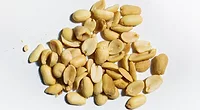Experts Outline Process for Food Allergen Derivative Exemptions

Credit: مهدی کردی (mahdikordi) via Unsplash
Experts with the World Health Organization (WHO) and the Food and Agriculture Organization of the United Nations (FAO) have developed a process for the consideration of future exemptions of highly refined foods and ingredients derived from or containing a priority allergen food.
A recently released report details the conclusions of a Joint FAO/WHO Expert Consultation on Risk Assessment of Food Allergens meeting, which was the fourth and final meeting in a series on allergens, and took place in Rome, Italy on November 14–18, 2022. The findings are intended to support the Codex Alimentarius Committee on Food Labelling (CCFL) and the Codex Committee on Food Hygiene (CCFH) in updating Codex guidance and code on allergen labeling, precautionary labeling, and allergen controls. The November 2022 meeting addressed whether certain foods and ingredients, such as highly refined foods and ingredients, that are derived from any of the foods on the list of priority allergenic foods could be exempted from mandatory declaration.
Allergen derivative assessment for exemption should consider the equivalence of any new derivative and its uses to any existing ingredient(s) of a similar type from similar sources, taking into account species of origin, total protein content, other critical compositional features, safety and any reported adverse reactions, and methods of manufacturing. For total protein, it is recommended to use more than one test method, each based on different principles that are fit for purpose and may include total amino acid analysis as appropriate. Clinical evaluation, when necessary, may require an oral food challenge study. Exposure assessment based on safety assessment principles is also an essential component of the process.
The expert committee concluded that, for currently accepted exemptions, there is an established history of safe consumption. The exposure estimates in reasonable worst-case consumption scenarios, based on the scientific data considered for the exemptions approved to date—in the EU, Australia/New Zealand, and the U.S.—have lead to values around the relevant Reference Doses (RfD) established by the 2nd meeting divided by 30 (RfD/30). Consequently, RfD/30 appears to provide an adequate margin of exposure (MoE) for derivative safety assessment.
Suitable methods of analysis are available for protein levels based on RfD/30. A derivative that undergoes the weight of evidence risk assessment as outlined in the report and meets the RfD/30 criterion may not require clinical studies to establish safety.
Based on its conclusions, the expert committee recommends that the process outlined in the report be used to guide any future development and evaluation of derivative exemptions. Establishment of safety based upon the present approach is dependent upon consideration of data quality, outcome of the exposure assessment for all intended ingredient uses (specified for exemption), and review by competent authorities (as needed). When safety is established, exemption can be justified.
Looking for quick answers on food safety topics?
Try Ask FSM, our new smart AI search tool.
Ask FSM →







